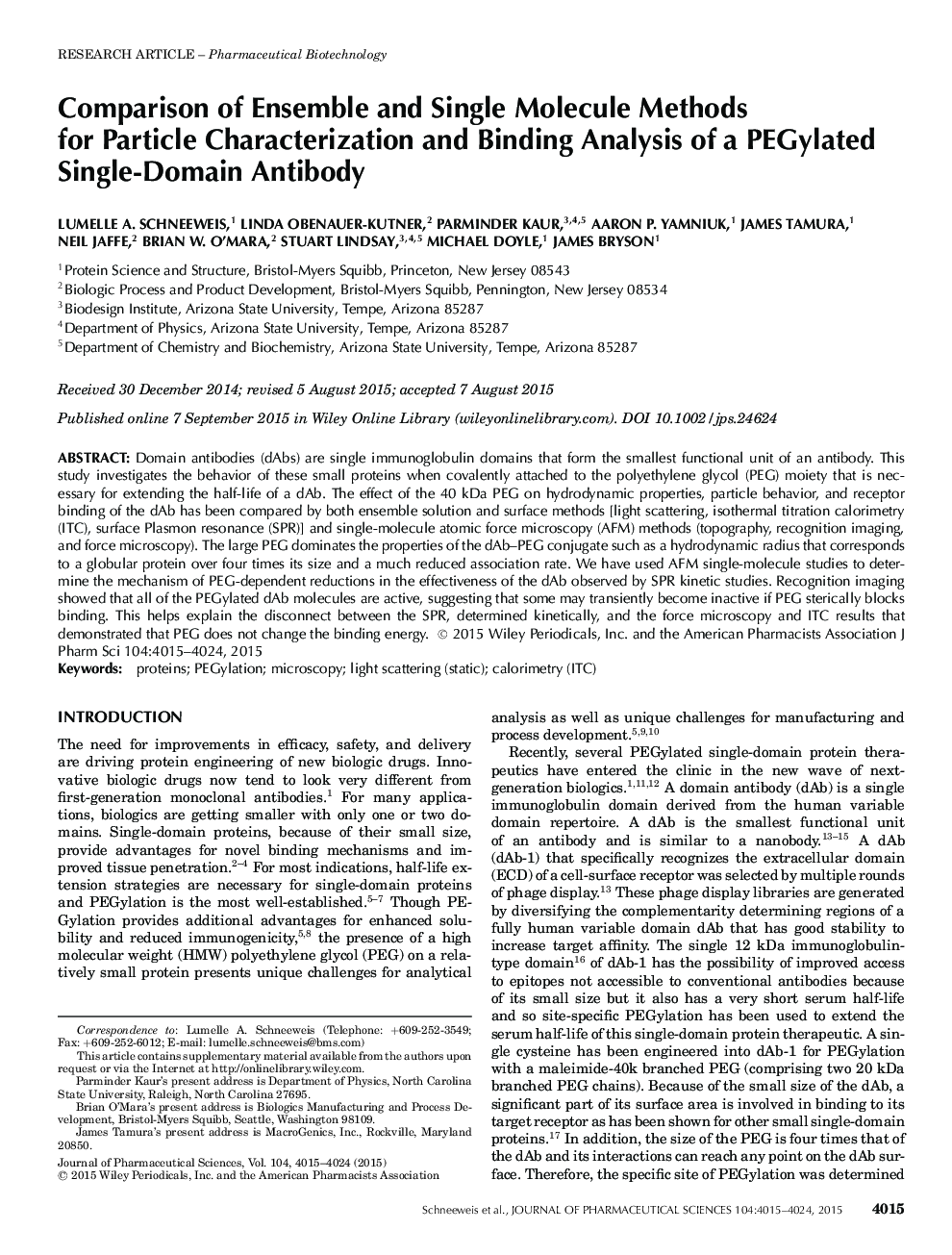| Article ID | Journal | Published Year | Pages | File Type |
|---|---|---|---|---|
| 10161926 | Journal of Pharmaceutical Sciences | 2015 | 10 Pages |
Abstract
Domain antibodies (dAbs) are single immunoglobulin domains that form the smallest functional unit of an antibody. This study investigates the behavior of these small proteins when covalently attached to the polyethylene glycol (PEG) moiety that is necessary for extending the half-life of a dAb. The effect of the 40Â kDa PEG on hydrodynamic properties, particle behavior, and receptor binding of the dAb has been compared by both ensemble solution and surface methods [light scattering, isothermal titration calorimetry (ITC), surface Plasmon resonance (SPR)] and single-molecule atomic force microscopy (AFM) methods (topography, recognition imaging, and force microscopy). The large PEG dominates the properties of the dAb-PEG conjugate such as a hydrodynamic radius that corresponds to a globular protein over four times its size and a much reduced association rate. We have used AFM single-molecule studies to determine the mechanism of PEG-dependent reductions in the effectiveness of the dAb observed by SPR kinetic studies. Recognition imaging showed that all of the PEGylated dAb molecules are active, suggesting that some may transiently become inactive if PEG sterically blocks binding. This helps explain the disconnect between the SPR, determined kinetically, and the force microscopy and ITC results that demonstrated that PEG does not change the binding energy.
Related Topics
Health Sciences
Pharmacology, Toxicology and Pharmaceutical Science
Drug Discovery
Authors
Lumelle A. Schneeweis, Linda Obenauer-Kutner, Parminder Kaur, Aaron P. Yamniuk, James Tamura, Neil Jaffe, Brian W. O'Mara, Stuart Lindsay, Michael Doyle, James Bryson,
